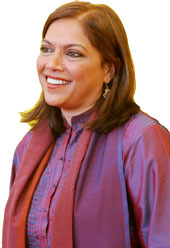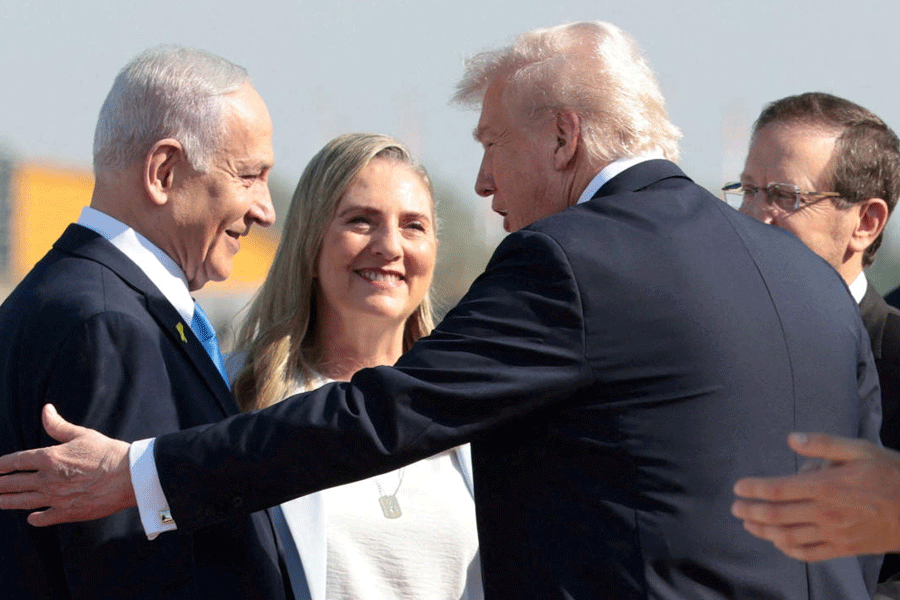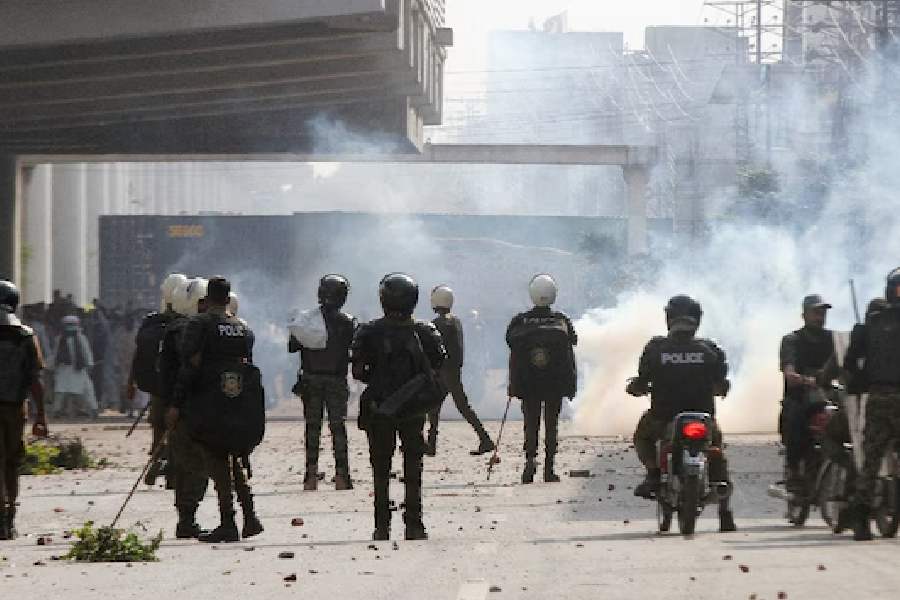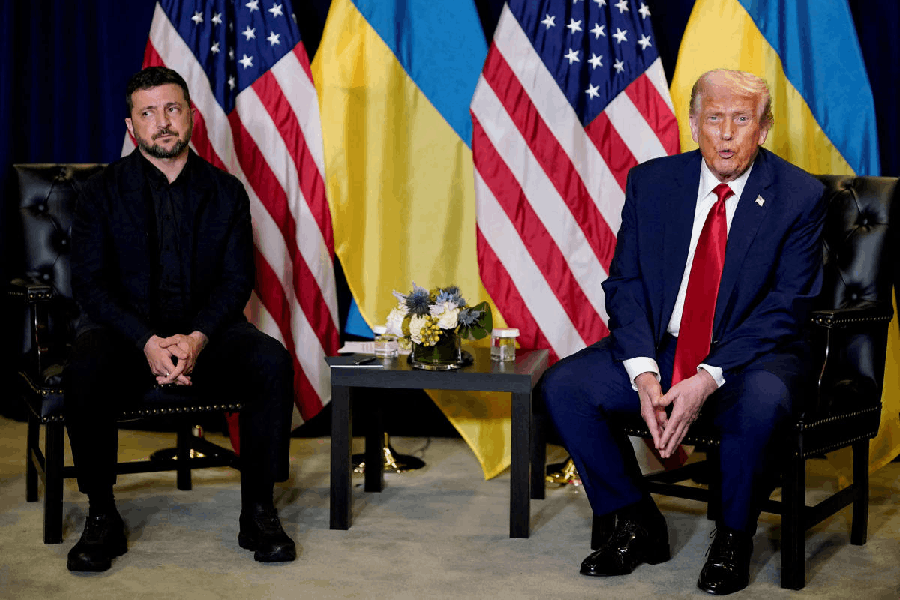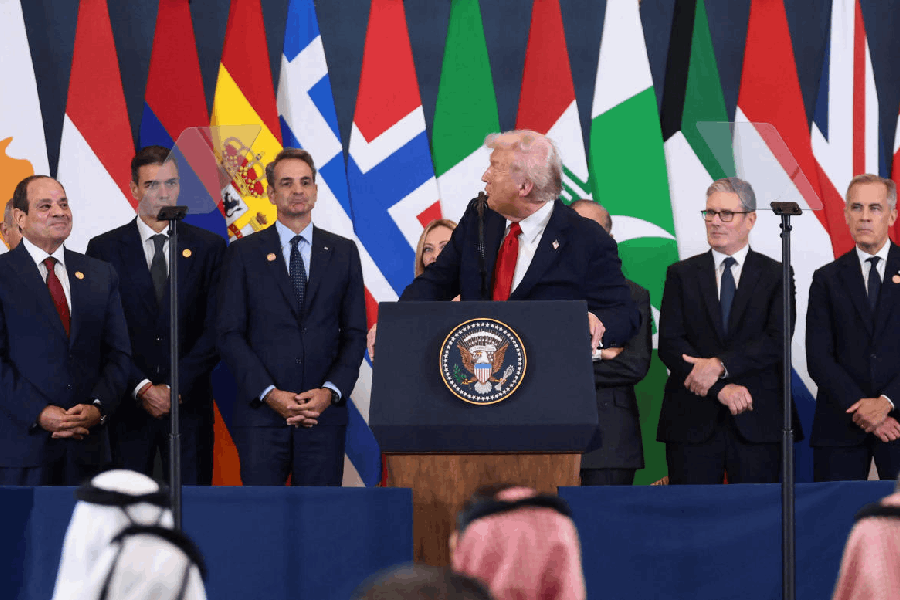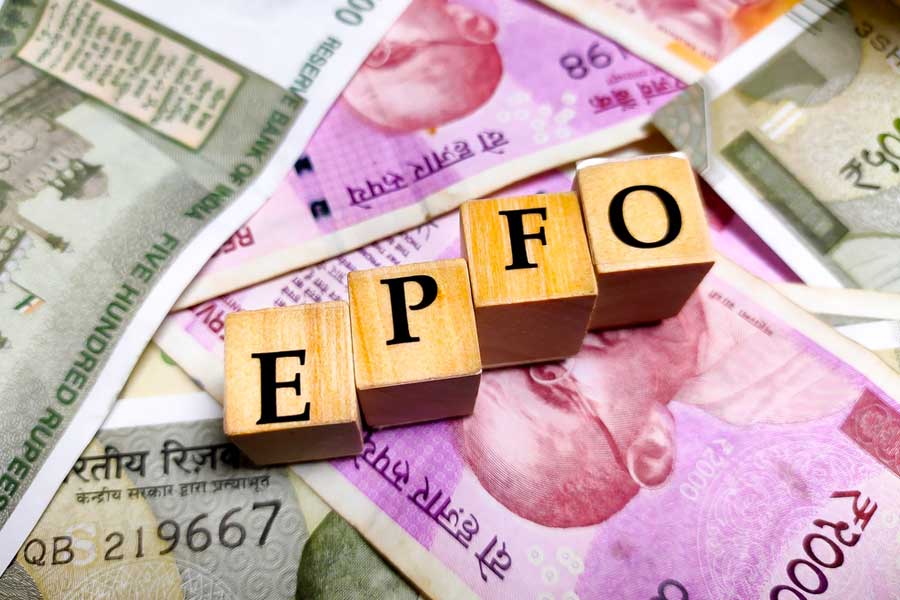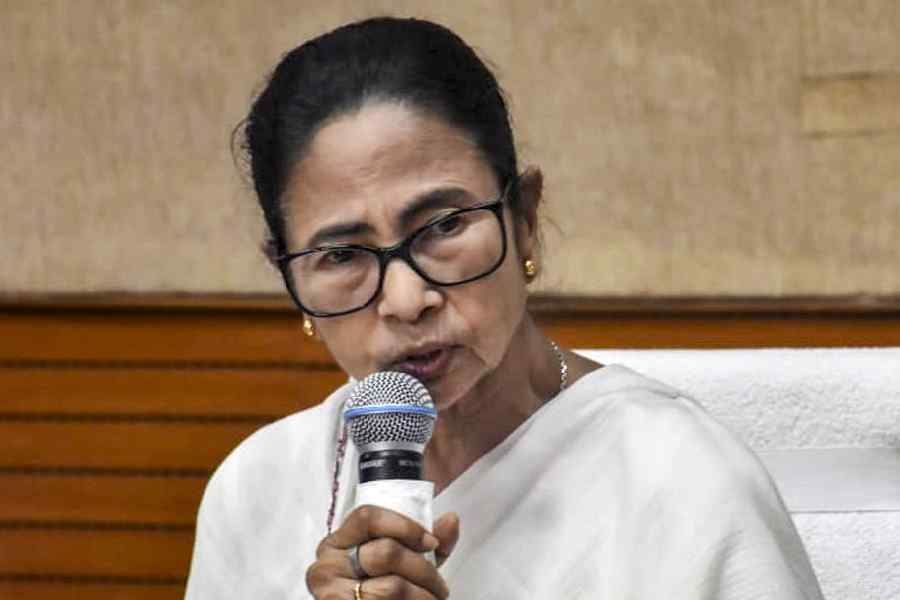 |
 |
| CALCUTTA CONNECTION: Mira Nair (top); a poster of Vanity Fair |
Becky Sharp picks up a whole green chilly and puts it in her mouth, stem and all. She has taken up a challenge to eat a hot Indian curry, and eat it she will. She nearly chokes on it, but turns to her hosts with a flashing smile. ?Delicious,? she says.
In that one scene in Vanity Fair, director Mira Nair captures William Makepeace Thackeray?s feisty heroine. Becky Sharp, clearly, is not the one to give up.
Nor is Mira Nair, the celebrated director who was in London for the gala screening of Vanity Fair at the London Film Festival. Nair, who has been asked to direct the next Harry Potter film, is moving on to other projects, but her thoughts, right now, are on a heroine who claws herself up from a life of poverty to be hosted by high society.
?We are all Becky Sharps,? says Nair, sitting in a hotel bar in London. ?I see Becky Sharp as a feminist, an independent woman who is going to succeed no matter what. She has her faults but then who doesn?t? We are all amenable to folly. The story is a modern tale of women like us,? she says. Nair?s film of Thackeray?s 900-page novel has kicked up a stir in some circles ? not merely for its casting coup (Reese Witherspoon plays Becky Sharp), but for the slight Indian twist to the early 19th-century setting of the novel. While Nair steers clear of a Gurinder Chadha-like Bollywood romp, she throws in a ?slave dance? choreographed by Farah Khan, elaborate Indian-theme parties with peacocks and turbanned waiters, and has her heroine travel to India and ride on an elephant on the ramparts of the Jodhpur fort, surrounded by dancing girls, puppeteers and the colour and festivity of desert India.
?It isn?t really an Indian twist,? says Nair. ?After all, the novel is set in the time of the empire. The British tradesmen were minting money from India and India is everywhere in the novel. Three of the characters in the novel are from Calcutta.?
Thackeray, Nair points out, was himself born in Calcutta. ?I used to pass his bungalow everyday when I lived in Calcutta and think about him,? she says. ?I?ve tried to capture the complexities of Thackeray?s work and the intersection of colony and empire, the crossing of oceans and the enticement to cross the oceans. Finally, it is a story of humaneness and love,? she says.
Vanity Fair is one of Mira Nair?s favourite novels. She read it first (under the covers) as a 16-year-old in a boarding school in Shimla, and was immediately seduced by its pages. It was her teacher, Sister Joseph Katherine, a devout Catholic with a taste for Dickens and Austen, who turned her into a lover of English literature, which Nair went on to study in Delhi University and then at Harvard.
| Mira on Makepeace |
| Vanity Fair is a bouquet of a novel. It has everything — food, feasts, sumptuous clothes, the decadence of genteel society. I want people not to just look at those clothes, but lust for them. Much of the wealth of London society that Becky Sharp craves is from the empire. Thackeray looks at the whole class structure of English society. He outlines its intricacies — the snobbery and the emptiness along with the exuberance. And at the same time there is shit. Quite literally. The streets of London at this time are filthy with the poor and half-starved. The new colonies are coming up and so there is new money. But the rich step out of their mansions, and outside there is shit. We shot for four days in London and needed permission to dirty up the streets because that is how it was — filthy and polluted. I want people to see the lives of the working class. That was the joy of filming this novel, its tremendous energy and its politics. |
? I love Thackeray,? says Nair. ?I enjoy his energy. He gives his readers everything. He started the book as a page-turner for a magazine and he delivered. He was a sensualist. He loved the low life and the high life and stood up for his anti-heroine.?
Nair?s efforts to get her first British period film spot on even took her to the Society of Medieval Pigs based in Bath, who supplied her with pigs for scenes in London. Nair also raided England?s stately homes, using those that had elaborate Raj interiors to shoot scenes relating to India. She shot in Elveden Hall in Norfolk, the former residence of Duleep Singh, son of Ranjit Singh, who had converted it into an Indian palace with marble interiors and carvings. Nair transforms the great hall into a wrestling pit.
While careful on authenticity and details, there are places where Nair takes liberties with Thackeray. For the last scene she sweeps the novel into India to end it with a suitable Monsoon Wedding-like climax.
In the original, Joseph Sedley takes Becky Sharp to help him spend his Indian fortune. ?But that would mean the last scene in my lovely energetic film was to be the damp English countryside, and I couldn?t bear that,? she says. ?So I swept them off to Rajasthan to end it with the vibrancy and colour of India.?
Nair first shot the scene in Colchester Quarry, not having the money to take the crew to India. But, she says, when the producers saw the scene, they coughed up more money for authentic outdoor shots in India. The film ends on the ramparts of the Jodhpur fort with the camera sweeping over the blue-washed houses of the town below, a far cry from the dirty streets of London where Becky Sharp grew up. Casting Reese Witherspoon, an American actress, in the role of Becky Sharp, one of English literature?s most famous heroines, was a bold step for Nair. ?I think Reese is brilliant. Her sensuality is full-blown. You can?t take your eyes off her,? says Nair. ?Besides, as an American, she is an outsider, just like Becky Sharp was. She has done a tremendous job.?
Handling a cast that covered the best of Hollywood with stalwart English actors like Jim Broadbent (Iris) and Rhys Ifans (Notting Hill) was also a challenge. Nair made her cast and crew do an hour?s yoga everyday, getting two Iyengar yoga instructors to help them through their dog-asanas and pranayams. The film, despite its sweep and historical setting, was shot in just 55 days. Monsoon Wedding took 30 days to shoot.
Nair is now busy with her latest venture. She is just back from Calcutta where she has been casting and location-hunting for her new film The Namesake based on Jhumpa Lahiri?s novel. She has already cast Konkona Sen Sharma, Abhishek Bachchan and Irrfan Khan and will be casting her mentor, the playwright Badal Sircar, in a cameo role. A major Hollywood star is also likely to be signed up, but Nair is keeping the identity under wraps.
The tale of an Indian bride who travels from Calcutta to New York, Nair says, is in many ways her own story. ?While Monsoon Wedding was about my Delhi roots, this is exactly the road I?ve moved from Calcutta to Massachusetts and then New York City.?
Shooting starts in six months, and the film is expected to be ready by the end of next year. She will now be location-hunting in Calcutta and finalising the cast. ?I love Calcutta, I spent 16 summers in the city and I?m really excited at the thought of filming there,? says Nair. Given the meticulousness of her search for medieval pigs, expect Nair?s Calcutta to be everything from jhal muri and the Maidan to Ballygunge and beyond.

